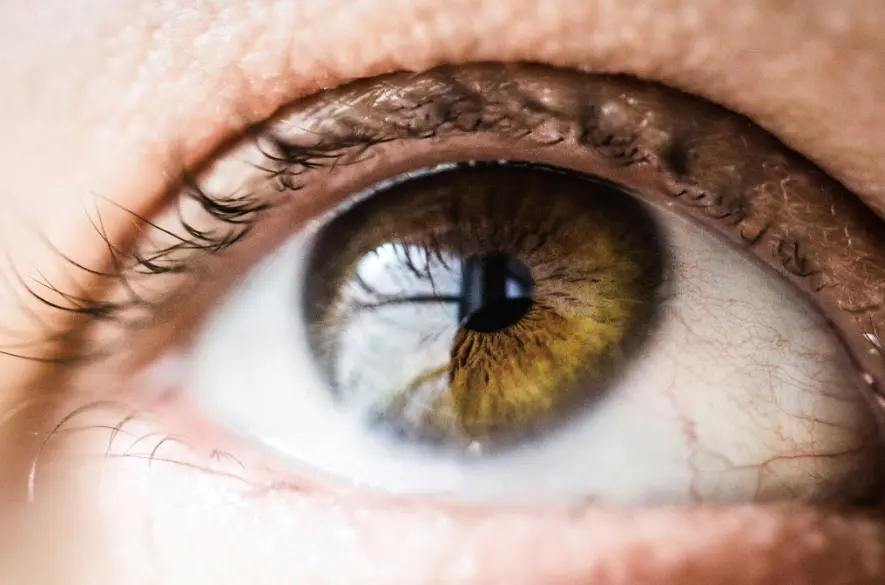Recovery after vaginoplasty takes around 6 weeks for most patients, though full healing and sensation may take several months. Expect swelling, bruising, and soreness in the first 2 weeks, with gradual improvement by week 4. You can resume normal work and sex after week 6, once cleared by your surgeon. Follow aftercare closely to prevent infection and support long-term results.
Whether you’re a cis woman who wants vaginal tightening or a trans woman who wants gender-affirming surgery, vaginoplasty may be a procedure you’re interested in. A vaginoplasty can tighten, construct, or reconstruct both the vaginal canal and the external genitalia. Because this, it serves both medical and aesthetic purposes.
As you can imagine, it’s a complicated procedure, and with that comes a recovery period afterward. Since you need to take time off of work or other responsibilities, you want to know what the timeline is like so you can plan accordingly.
Here’s a look at vaginoplasty recovery time week by week. Do note that if you get non-surgical procedures (such as laser or radiofrequency), the recovery period is much faster, but you only get minor tightening. The article will address the surgical side of recovery.
Immediate Post-Op
After surgery, you’ll feel the effects of the anesthesia wear off. Depending on the type that was given, it’s possible that you may feel dizzy or nauseous, which is normal. Within a few hours, it should completely wear off.
To control the bruising and swelling at the surgical site, you should use ice packs, frozen peas, or anything similar for the first 24 to 48 hours after surgery. Make sure to wrap the frozen item in a clean cloth so you don’t get frostbite or ice burns. Plus, wear loose clothing and cotton underwear.
The doctor may have packed the area with gauze to support the structure and control bleeding, so be careful. In addition, depending on the type of vaginoplasty you’ve had, there may be a urinary catheter in place.
In any case, you should follow hygiene protocols strictly to prevent infection. You can further manage the pain and swelling with either over-the-counter or prescribed medications (if you use the former, then clear it with your doctor first). Your surgeon may recommend that you use stool softeners to avoid straining during bowel movements.
The most important thing is that you mostly stay in bed for the first few days to minimize strain. This also allows your body to heal efficiently.
To prevent blood clots from happening, begin deep breathing and gentle leg movements. If you’re able to sit or walk around, you should know that some discomfort is common.
Weeks 1-3
After the initial first few days, you should be able to get around and move around gently. However, you’re still not in the clear yet, so we recommend taking at least a few weeks off of work to focus on healing up.
You’ll still have some swelling and bruising, but it’ll gradually improve. Usually, you’ll have dissolvable sutures that should’ve dissolved by now, so there’s no need for removal unless advised.
If the surgery involved neovaginal creation (such as for vaginal agenesis), then you may have to start vaginal dilation using medical dilators after the first or second week after surgery.
In these weeks, light walking is encouraged, as it’ll help circulate your blood to promote healing and prevent blood clots. However, you should refrain from squatting, lifting, or stretching movements that may put pressure on the surgical site. This includes sexual activities.
You should continue getting as much rest as possible, and if needed, use ice packs and medications to manage the bruising, swelling, and residual pain/soreness. Some people are able to return to work after 2 weeks, depending on their nature of work and how intense their vaginoplasty was.
Weeks 4-6
These weeks are considered the intermediate recovery weeks; this means that your pain should’ve subsided and only mild discomfort should remain (especially during sitting or movement). The external stitches will likely fall off naturally.
You may have some light discharge, which is normal. However, if there’s a foul smell, then you should contact your surgeon.
If you’re doing vaginal dilation, then continue as prescribed to maintain vaginal depth. These exercises can prevent scar tissue formation too.
In these weeks, you can resume light chores and short outings. But you should still avoid sexual intercourse, as well as baths and swimming. Any activity that may irritate the surgical site should be avoided too.
After Week 6
Typically, patients can return to a normal work schedule after 6 weeks, as they’re usually completely vaginoplasty healed. This means that you can start working out again and even have penetrative sex after vaginoplasty.
Just because you’re considered fully healed doesn’t necessarily mean you’ll feel 100% though. There may be some lingering side effects, such as a little pain, inflammation, and limited range of motion. The incisions should become more pliable and fade in color.
If dilation’s required, then the frequency may drop from several times a day to once or twice daily. The frequency will keep decreasing as your healing progresses.
Months 3-12
The final results from your vaginoplasty procedure should stabilizing, meaning the vaginal structure, sensitivity, and appearance will all settle. If you had nerve repair or reconstruction done, it may take months for full sensation to return.
Your surgeon may recommend pelvic floor therapy to help improve muscle tone. It can also address scar sensitivity and sexual function.
Make sure to have annual gynecological visits to monitor your vaginal health and detect issues early.
How Long Does Vaginal Rejuvenation Last?
Now that you have a better idea on the recovery time for vaginoplasty, you may be curious about how long the results last. The answer is that it depends.
Not only do non-surgical procedures have minor results, but they only last a few years as well. The surgical options can have results that potentially last a lifetime, but aging and childbirth can affect or undo the results.
Be Prepared for the Vaginoplasty Recovery Time
Don’t let your bedroom confidence suffer any longer; you deserve to look and feel your best, especially in regards to your relationship.
Your insecurities can be addressed by a vaginoplasty, which targets both exterior and interior flaws. And now that you know what the vaginoplasty recovery time is like, you can plan ahead of time so you miss a minimal amount of work.
If you’re interested in having vaginoplasty, get in touch with us now. Dr. Valdez is a renowned specialist in cosmetic and plastic surgery.
References
- What is recovery like after vaginal rejuvenation? Women’s Wellness Institute of Dallas. June 6, 2012. Accessed June 30, 2025. https://womenswellnessinstitute.com/what-is-recovery-like-after-vaginal-rejuvenation/
- Vaginoplasty Recovery & Aftercare | The Aesthetic Society. October 22, 2021. Accessed June 30, 2025. https://www.theaestheticsociety.org/procedures/genital/vaginoplasty/aftercare-recovery
- Vaginal dilator patient guide: How do I use a vaginal dilator? – Sunnybrook Hospital. Accessed June 30, 2025. https://sunnybrook.ca/content/?page=occ-gynae-vaginal-dilator-how
- Pelvic Floor Therapy. May 29, 2025. Accessed June 30, 2025. https://www.hopkinsmedicine.org/health/treatment-tests-and-therapies/pelvic-floor-therapy
- How to Prevent Blood Clots After Surgery. Healthline. October 19, 2015. Accessed June 30, 2025. https://www.healthline.com/health/how-to-prevent-blood-clots-after-surgery
- How Long Does a Vaginoplasty Last? Annandale OB-GYN. June 28, 2022. Accessed June 30, 2025. https://www.annandaleobgyn.com/news/how-long-does-a-vaginoplasty-last/
- Cold Compresses and Homemade Ice Packs. Cleveland Clinic. Accessed June 30, 2025. https://health.clevelandclinic.org/does-it-matter-what-type-of-ice-pack-you-use-for-an-injury
Frequently Asked Questions
How long does it take to fully recover from vaginoplasty?
Most patients recover within 6 to 8 weeks, but full healing and nerve regeneration can take up to 12 months. Always follow your surgeon’s advice before resuming sexual activity or exercise.
What can I expect during the first few weeks after vaginoplasty?
In the first 1–3 weeks, expect swelling, bruising, and mild pain. You’ll need plenty of rest, wear loose clothing, and may need to use vaginal dilators if instructed. Avoid heavy activity and sexual intercourse during this time.
When can I return to work after vaginoplasty?
Depending on the extent of your surgery and your job type, most people return to light or desk work in 2 to 3 weeks. Strenuous physical jobs may require up to 6 weeks off.
How long do vaginoplasty results last?
Surgical vaginoplasty results can last many years and often for life, though aging or childbirth may affect tightness over time. Non-surgical vaginal rejuvenation, by contrast, typically lasts 1 to 3 years.






